How to Grow an Avocado from a Seed: 9 Tips & Tricks
-
Lindsey Lawson
- Last updated:
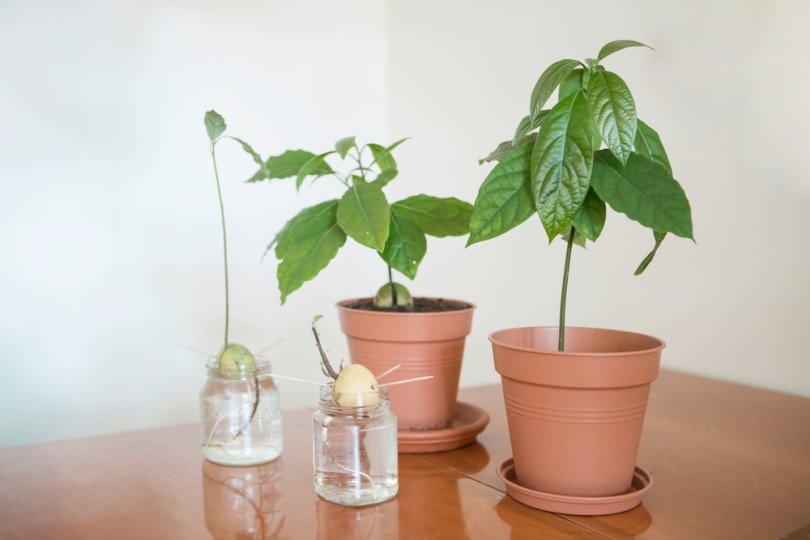
After indulging in a delicious avocado, whether in regular form or some tasty guacamole, you can grow an avocado tree by keeping the pit and getting started with a homegrown avocado plant of your own. It’s pretty simple, too! So, instead of throwing your pits away, we will help you put them to good use. Follow along for everything you need to get started and some tips and tricks on how to grow an avocado directly from a seed.

Before You Start
Before you get started, some preparation needs to take place to ensure you have a successful setup. Avocados grow in tropical climates that get lots of sunlight, so you need to be prepared to provide them with lots of light and keep them at the right temperature throughout the process.
| Temperature | 60 to 85 degrees Fahrenheit |
| Ideal Humidity | 45% – 65% |
| Soil | Well-drained, never wet or soggy |
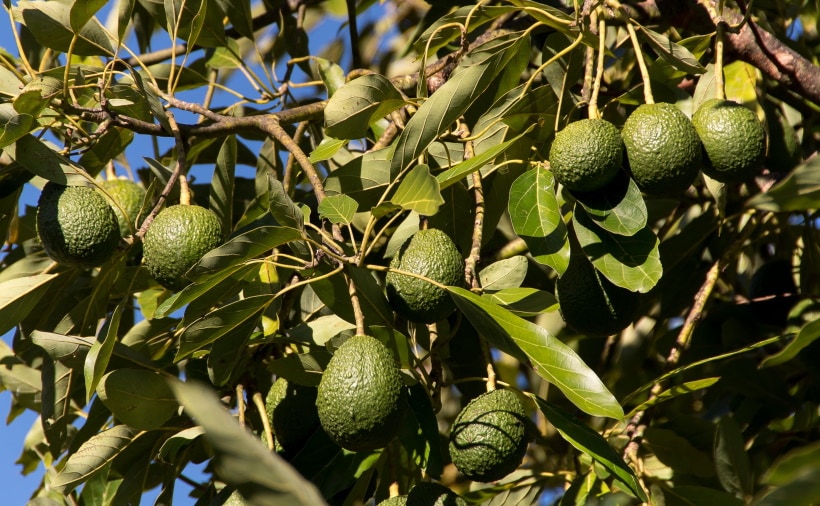
- Toothpicks: Toothpicks are necessary for propping the seed up in a glass for propagation. You will use them as scaffolding to hold the bottom of the seed submerged in water while the top remains exposed.
- Clear glass: In the beginning, you will use a clear glass to submerge the bottom of the seed in water as you wait on it to sprout. Clear glass will allow you to see the roots begin to grow and you will also be able to tell when the water needs to be changed.
- 8”-10” Pot with drainage holes: Once the plant is ready to be moved from the glass and potted, you will need an 8 to 10-inch diameter pot for planting. The pot will need drainage holes to ensure any excess water can be drained properly.
- Soil: Avocado plants need well-draining soil that will allow the roots to absorb what it needs and the rest will dry out. The ideal pH of the soil is 6 to 6.5 and some recommended varieties include decomposed granite, sandy loams, and humus soil.
- Artificial Lighting: Depending on where you live, you may or may not require some artificial lighting. If you live in a place that suffers through long, harsh winters, you will likely need to provide some extra lighting during the darker days to ensure your avocado plant can grow properly in conditions that mimic the natural tropical environment it originates from.
The 9 Steps to Growing an Avocado from a Seed
1. Remove and Wash the Pit
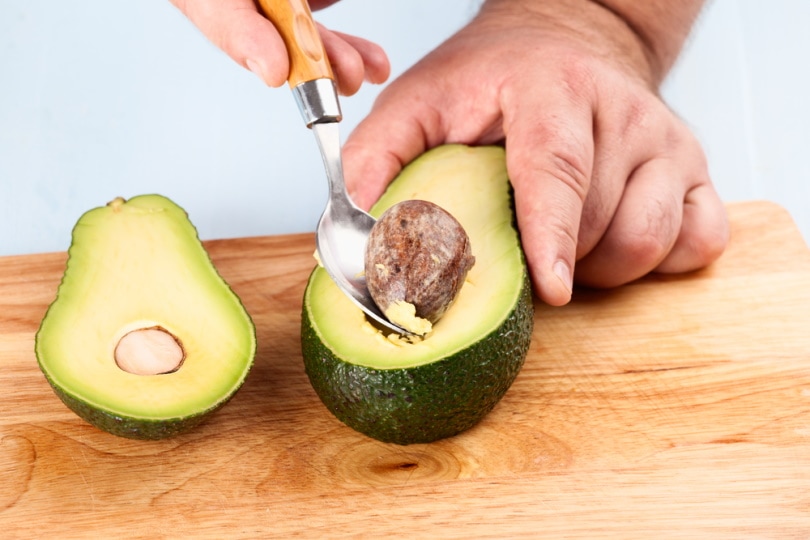
Carefully remove the pit from the avocado without cutting it or causing any damage then wash off any remaining avocado fruit. Do not remove the brown skin on the pit, this is the seed cover and is necessary for the growth process. You can clean by allowing the pit to sit in water for a few minutes before gently scrubbing off the fruit.
2. Distinguish the Top from the Bottom
Each pit has a top and a bottom. The roots will grow from the bottom and the sprouts will eventually emerge from the top. The end that is slightly pointier is considered the top and the flatter end is the bottom. The bottom part must be submerged in water, so you need to recognize which is which before moving on to the next step.
3. Put Your Toothpicks in Place
Take all four toothpicks you’ve set aside and stick them firmly into the seed at a downward angle. You need to space them evenly around the circumference. The toothpicks will allow you to properly submerge the bottom while holding the top out of the water while sitting in a glass. If you prefer not to use toothpicks, you can purchase an appropriate-sized seed holder for propagation.
4. Place in Clear Glass
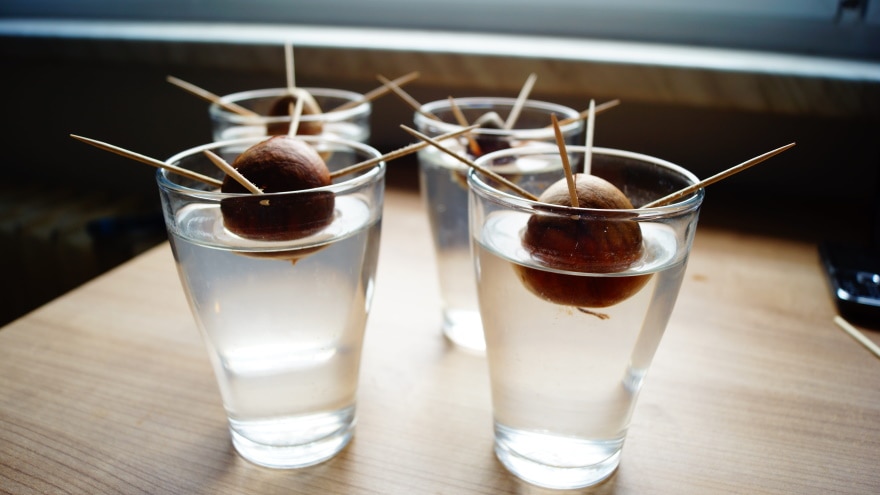
Place the seed carefully, bottom down in your clear glass so that your toothpicks can keep the bottom submerged in place. You will need to change the water at least every 5 to 7 days to prevent any mold or bacterial growth that can harm the plant. Place the glass on a windowsill that will get lots of sunlight, a very minimum of 6 hours each day.
5. Wait for It to Sprout
Next, you wait. It can take anywhere from 2 to 8 weeks for a sprout to emerge. The top of the pit will dry out as it sits and eventually forms a crack that will extend to the bottom of the pit. The outer brown skin will also begin to slough off. A taproot will emerge from the crack at the bottom, it must always remain submerged in the water, and you may even notice it begin to branch.
6. Cut Back Stem to Encourage Growth
When the stem reaches a length of 6 to 7 inches, it is recommended that you cut it back to approximately 3 inches to encourage new growth. When it reaches this length after the first time you cut it back, it will be ready for potting in some soil.
7. Move from Clear Glass into Pot
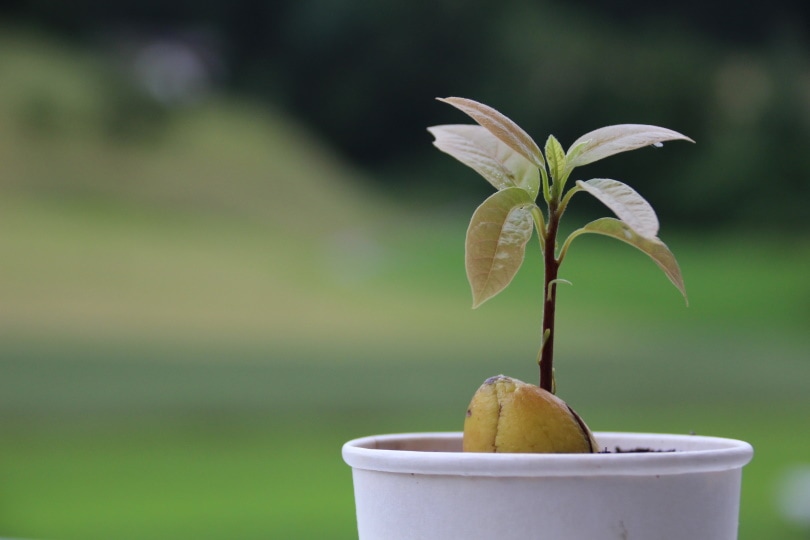
At this point, you will want to get out your 8 to 10-inch pot and plant the seed in humus soil or a loose, rich, well-draining soul leaving the top half of the seed still exposed. Once planted in the pot, place back on a sunny windowsill to ensure the plant gets as much sun as possible.
8. Water and Allow Growth
Now that your plant is out of clear glass and pot, it will need frequent watering to keep the soil moist but not saturated. If the leaves begin to yellow, it is a sign you are overwatering the plant and you should allow it a few days for drying.
9. Pinch Out Leaves to Encourage Bushiness
When your stem reaches about 1 foot in length, pinching out the top two sets of leaves can encourage more leaves to emerge and side shoots to grow. After that, pinch out the most recent two sets of leaves toward the top for every 6 inches of growth.

Best Tips for Ensuring Success
Keeping Bugs at Bay
Aphids can be quite a problem when you are attempting to grow an avocado plant. These pesky little sap-sucking insects love avocado leaves and if you wind up with them, you need to get rid of them for the sake of your plant. When you notice aphids on the leaves, you can start by spraying the plant down with some water to wash them off.
Once they are off the plant, you can create a mixture of water, a small amount of dish soap, and neem oil to prevent them from coming back. Make sure to keep an eye on your plant and do a thorough check for aphids once every 4 or 5 days and repeat this process as necessary.
Winter Survival
Young avocado trees can thrive outdoors in the summer as long as you keep an eye out for heavy rains, but if you live in a climate that will drop below 45 degrees Fahrenheit they will need to come indoors during the colder months when the temperatures are low. If you live in a climate with long, cold winters you need to ensure the plant is kept indoors and is given a lot of sunlight.
Do not allow the plant to be outdoors in these lower temperatures, as it can kill it very easily. Keep an eye on the weather if conditions change quickly during the spring and fall. If you need to, grab an artificial plant light to make sure the avocado tree gets the recommended 6 hours minimum of healthy light per day.
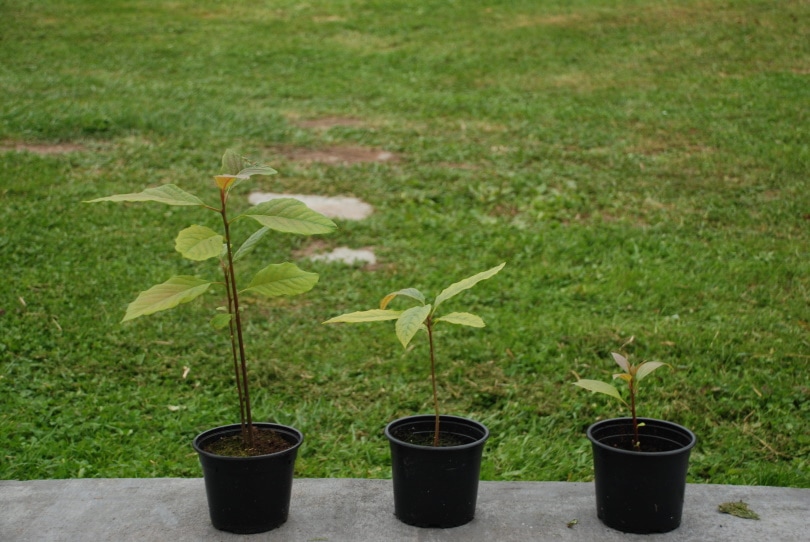
Grow Multiple Plants
There is no guarantee that your avocado plant will bear the much-anticipated avocado fruit! Some avocado plants will begin growing fruit after about 3 to 4 years of age while others can take much longer, even up to 15 years. Some avocado trees may never bear fruit at all, which is why it is recommended to plant more than one.
Having multiple plants growing at the same time will help with pollination. Naturally grown avocados are much different than commercially grown varieties, as they are grown differently to control the yield of the fruit. Remember that this is a process, so keep up with care and be patient and you may eventually get your avocado.

Conclusion
Growing your avocado plant from a seed is as simple as keeping aside the pit of your eaten avocado and starting the propagation process. Once you’ve established rooting and have a healthy stem, the plant can be potted so that you can care for it and watch it grow. Not all avocado trees will produce fruit and it can take years for a single tree to produce its first avocado, if ever. Regardless, it is a fun and exciting process that can easily be done in any climate as long as you are aware of the care requirements.
Featured Image Credit: marketacerna.com, Shutterstock
Contents
